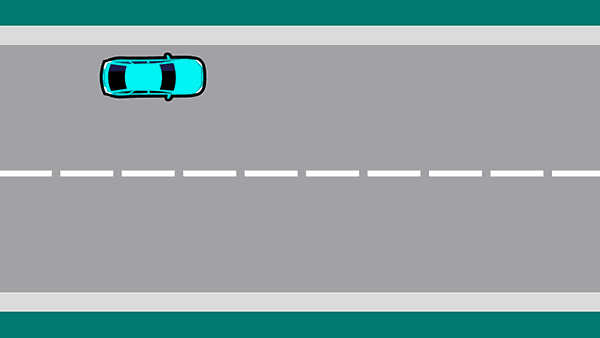A 3-point turn is a way to turn around when the road isn’t wide enough to do a U-turn.

Where should you practise this?
- Choose a flat street where you can see at least 50m in each direction.
- The street needs to be narrow enough so you can’t complete the turn in one movement like a U-turn.
How to do a 3-point turn
Pulling over and starting the turn:
- Look for a place to pull over where you can see any traffic coming up or down the street.
- Signal left and pull over to the kerb.
- Stop your car parallel to, and within 30cm of, the kerb.
- Signal right for at least 3 seconds before starting the turn.
- Check your mirrors and over your right shoulder just before you pull out to start your turn.
Completing the turn:
- Make the turn in no more than 3 movements (forward, back, forward).
- Complete the turn without using any driveways and without touching the kerb.
- Return to the correct side of the road as you complete the third movement.
- Check your mirrors and over your shoulder before pulling back into traffic.
Tips for the test
You’ll only have to do a 3-point turn in the test if there isn’t a suitable place to do a reverse parallel park. If the Testing Officer does ask you to do one, keep the points below in mind.
- When the Testing Officer asks you to pull over and do a 3-point turn, make sure you stop in a safe and legal place.
- Do the turn without using driveways or entering private property at any stage.
- Do the turn without running any wheels up onto the kerb, or bumping a kerb hard enough to jolt your passengers.
- You will have two minutes to complete the turn.
Are you test ready?
Question

Next skill